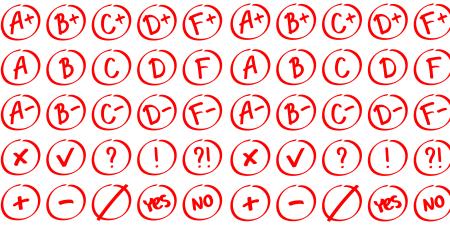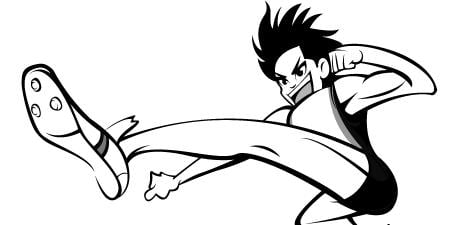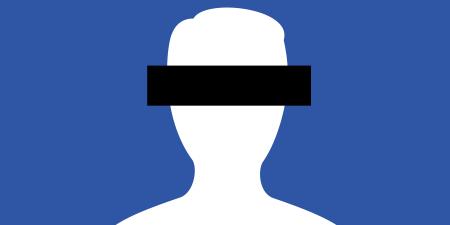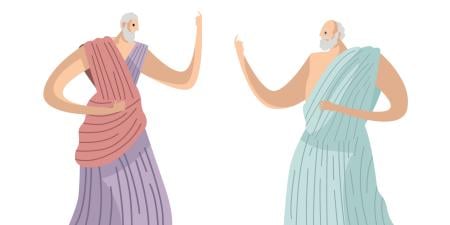In 1990, pediatrician Henry K. Silver first documented the rampant problem of medical student mistreatment in a study reported in JAMA, which found that 46.4 percent of students at one medical school had been abused at some point during medical school; by the time they were seniors, that number was 80.6 percent [1]. In the 24 years since that landmark study, medical educators have invested considerable resources in qualifying and quantifying the problem to address it appropriately.
The conversation around student mistreatment reached a crescendo in 2012 with the publication of Pauline Chen’s article “The Bullying Culture of Medical School” in The New York Times [2], a poignant admission of the problem and the first major public acknowledgment of the bullying culture by a member of the medical profession. Using her personal experience, Chen’s article elucidates the significant morbidity associated with medical student abuse. Medical students who report mistreatment were more likely to experience depression, alcohol abuse, low career satisfaction, low opinion of the physician profession, increased desire to drop out of school, and even suicidality [3-5].
Despite increased awareness of the problem, attempts at ameliorating medical student abuse have been largely unsuccessful. The Association of American Medical Colleges graduation questionnaires (AAMC GQs) from 2012 and 2013 reported student mistreatment rates of 47.1 percent and 42.1 percent, respectively [6, 7], similar to the 46.4 percent rate Silver found at a single institution in 1990. And, unfortunately, public humiliation and verbal abuse, the most common forms of mistreatment [8], are at similar or higher levels now than they were in 1999 [9].
Looking to other countries has not yielded models for addressing this problem. Studies from medical schools across the globe have corroborated the findings of American studies, with schools in Chile [3, 10], Finland [11], Israel [12], Japan [13], Pakistan [14-16], Germany [17], Saudi Arabia [18], Nigeria [19], and Canada [20] reporting medical student abuse. These studies have identified a similar resistance to eliminating the problem, even with an understanding that mistreatment is a “universally wrong tradition in medical culture” [21].
The question that this issue of Virtual Mentor seeks to answer is: what is medical student mistreatment and how much, if any, is appropriate to the learning environment? The question is complicated by disagreements about the definition of mistreatment, the sources of mistreatment, and whether its effectiveness as a teaching tool outweighs the harms it causes and the ethical violations it entails.
Defining Mistreatment
Numerous studies have demonstrated that attending physicians, residents, nurses, and students define abuse differently, with further variability based on specialty, gender, and ethnicity [22-24]. The definition is complicated by the “hidden curriculum” of professionalism, which dissuades and even punishes students for talking about abuse they witness [25]. As Richardson and colleagues astutely state: “Marked variability in the students’ perceptions of mistreatment within departments suggest that a variety of approaches will be required to improve the medical training environment” [26]. It is clear that the variety of approaches attempted to date has not sufficed to curb mistreatment. In this issue of VM, Brian Mavis, of the Association of American Medical Colleges graduation questionnaire advisory committee, discusses the committee’s efforts to standardize statistics on mistreatment by focusing questions on whether particular events have occurred, rather than on the student’s perception of whether or not those events qualify as mistreatment.
What Does Mistreatment Stem From?
Student mistreatment is generally understood to stem from the teacher-learner power differential inherent in the hierarchy of medical education, which leads to a “cycle of abuse” in which medical students who are mistreated go on to become doctors who mistreat other medical students [27-29]. Kassebaum brilliantly characterizes this cycle as a “transgenerational legacy” that indoctrinates physicians-in-training into a culture of cynicism and abuse [8]. This culture becomes part of the “hidden curriculum” in medical education which hinders interpersonal communication and negatively impacts patient care [8, 30, 31].
Medicine can learn from the US military’s alteration of training methods to eliminate abuse of new recruits, discussed in this issue by Gia A. DeRosa and Gerald F. Goodwin. In their piece for this issue, Joyce M. Fried and Sebastian Uijtderhaage discuss the UCLA David Geffen School of Medicine’s ongoing attempts to interrupt the cycle of educational mistreatment through its Gender and Power Abuse Committee. Nancy J. Michela writes on the use of feminist teaching practices to reduce hierarchy and empower students in nursing education.
Some believe that structural pressures in health care are responsible for mistreatment by rewarding abuse and punishing professional behavior. Brainard posits that students who cut corners, cover up minor errors, and unconditionally agree with superiors are seen as efficient and timely, characteristics that are highly valued by the burdened health care system. These students are more likely to be seen as professional than students who display honesty and respect for patients [31]. This environment rewards medical students who act as professional and ethical “chameleons” [31]. In her case commentary, Kimberly A. Kilby identifies ways in which the evaluation and feedback systems used in medical education could be altered to discourage, rather than reward, competitive behavior.
Effective, but Morally Defensible?
The dominant teaching culture in medicine is confrontational and challenges the knowledge and learning capabilities of students, and teachers can easily cross the line into being verbally abusive and humiliating their students. However, many medical students and physicians argue that this traditional model of teaching in medical education better prepares medical students for the clinical environment and is an effective pedagogical tool. As Wiebe asserts, “most would agree that a certain amount of intellectual confrontation can be constructive” [32] in medical school. The age-old practice of “pimping,” he says, forces students to be prepared and think on their feet. Intimidation and abuse have been cited as valuable in the education of medical students, including by medical students themselves [10, 33]. Aref-Adib writes “Through this Socratic method of teaching, teachers are wearing us down, exhausting us until our thoughts are clarified and any faulty reasoning is exposed” [34].
Ultimately, however, it is clearly the medical profession’s duty to provide an academic environment that exemplifies the morals it wants trainees to embody and does not require trainees to withstand abuse in the name of learning. As a previous Virtual Mentor author puts it, “medical educators have a moral imperative to create a culture of caring and respect in the field” [27]. In this issue, Jonathan Belsey argues that, despite the success of aggressive teaching methods—including those he himself used to teach students on the BBC program Thoroughly Modern Medic—they are morally unjustifiable and we must seek better alternatives.
Solutions?
Several of this month’s authors argue that, by better understanding the experience of being bullied, we can move towards effective solutions that teach professional behavior while preserving academic rigor. Pauline Chen speaks in this issue’s podcast about her article’s reception by the public and her experience with bullying as a learner and a teacher. Alison M. Heru takes up the use of role playing to promote understanding among instructors about the experience of the mistreated student. Georgette A. Dent emphasizes the importance of anonymous surveys for collecting accurate reports from mistreated students, so that instructors can understand how they affect students. Tripp Leavitt, a medical student at the Boston University School of Medicine, contributes and interprets artwork that explores the experience of sacrifice and careful navigation of authority that medical training requires.
Case commentators Howard Brody and Paul Burcher argue that mistreatment can be ameliorated by educators’ establishing and enforcing institutional policies against it and students’ reporting humiliating behavior. Robert C. Oh and Brian V. Reamy believe that on-the-spot questioning can be instructive and useful without being humiliating or abusive.
This issue seeks to bring together a diverse range of perspectives on the issue of medical student mistreatment and to serve as a launching point for future work on curbing this pervasive problem. It is imperative that we do so for medical students, for the future of the profession of medicine, and for our patients.
References
- Silver HK. Medical student abuse: Incidence, severity, and significance. JAMA. 1990;263(4):527-532.
-
Chen P. The bullying culture of medical school. New York Times.August 9, 2012. http://well.blogs.nytimes.com/2012/08/09/the-bullying-culture-of-medical-school/?_php=true&_type=blogs&_r=0. Accessed November 27, 2013.
-
Frank E, Carrera JS, Stratton T, Bickel J, Nora LM. Experiences of belittlement and harassment and their correlates among medical students in the United States: longitudinal survey. BMJ. 2006;333(7570):682.
-
Stratton TD, McLaughlin MA, Witte FM, Fosson SE, Nora LM. Does students’ exposure to gender discrimination and sexual harassment in medical school affect specialty choice and residency program selection? Acad Med. 2005;80(4):400-408.
-
Association of American Medical Colleges. Medical school graduation questionnaire: all schools summary report 2012. https://www.aamc.org/download/300448/data/2012gqallschoolssummaryreport.pdf. Accessed January 31, 2014.
-
Association of American Medical Colleges. Medical school graduation questionnaire: all schools summary report 2013. https://www.aamc.org/download/350998/data/2013gqallschoolssummaryreport.pdf. Accessed January 31, 2014.
- Kassebaum DG, Cutler ER. On the culture of student abuse in medical school. Acad Med. 1998;73(11):1149-1158.
-
Association of American Medical Colleges. Learner mistreatment: shared accountability for the learning environment. https://members.aamc.org/eweb/upload/sun.3020-3022-3024.1300.koenig.pdf. Accessed February 2, 2014.
- Wilkinson TJ, Gill DJ, Fitzjohn J, Palmer CL, Mulder RT. The impact on students of adverse experiences during medical school. Med Teach. 2006;28(2):129-135.
-
Rautio A, Sunnari V, Nuutinen M, Lailala M. Mistreatment of university students most common during medical studies. BMC Med Educ. 2005;5:36.
- Lebenthal A, Kaiserman I, Lernau O. Student abuse in medical school: a comparison of students’ and faculty’s perceptions. Isr J Med Sci. 1996;32(3-4):229-238.
- Nagata-Kobayashi S, Maeno T, Yoshizu M, Shimbo T. Universal problems during residency: abuse and harassment. Med Educ. 2009;43(7):628-636.
-
Shoukat S, Anis M, Kella DK, et al. Prevalence of mistreatment or belittlement among medical students--a cross sectional survey at a private medical school in Karachi, Pakistan. PLoS One.2010;5(10):e13429.
- Mukhtar F, Daud S, Manzoor I, et al. Bullying of medical students. J Coll Physicians Surg Pak. 2010;20(12):814-818.
-
Ahmer S, Yousafzai AW, Bhutto N, Alam S, Sarangzai AK, Iqbal A. Bullying of medical students in Pakistan: a cross-sectional questionnaire survey. PLoS One. 2008;3(12):e3889.
-
Gágyor I, Hilbert N, Chenot JF, et al. Frequency and perceived severity of negative experiences during medical education in Germany--results of an online-survey of medical students. GMS Z Med Ausbild. 2012;29(4): Doc55.
-
Alzahrani HA. Bullying among medical students in a Saudi medical school. BMC Res Notes. 2012;5:335.
- Owoaje ET, Uchendu OC, Ige OK. Experiences of mistreatment among medical students in a university in south west Nigeria. Niger J Clin Pract. 2012;15(2):214-219.
-
Gold J, Ross P, Seeley J. Harassment and intimidation in Canadian faculties of medicine: what Canadian graduates are telling us. Paper presented at: 2001 Annual Conference of the Royal College of Physicians and Surgeons of Canada; September 2001; Ottawa, ON, Canada.
-
Nagata-Kobayashi, 628.
-
Ogden PE, Wu EH, Elnicki MD, et al. Do attending physicians, nurses, residents, and medical students agree on what constitutes medical student abuse? Acad Med. 2005;80(10 Suppl):S80-83.
- Babaria P, Abedin S, Berg D, Nunez-Smith M. “I’m too used to it”: a longitudinal qualitative study of third year female medical students’ experiences of gendered encounters in medical education. Soc Sci Med. 2012;74(7):1013-1020.
- Richardson DA, Becker M, Frank RR, Sokol RJ. Assessing medical students’ perceptions of mistreatment in their second and third years. Acad Med. 1997;72(8):728-730.
-
McKenna BM. Medical education under siege: critical pedagogy, primary care and the making of “slave doctors.” Int J Crit Pedagogy. 2012;4(1).
-
Richardson, 728.
- Osuch JR. Legacy of abuse in a sacred profession: another call for change. Virtual Mentor. 2009;11(2):161-166.
-
Wiebe C. Medical student “hazing” is unhealthy and unproductive. Medscape General Medicine. 2007;9(2):60. [video with transcript]. http://www.medscape.com/viewarticle/557598. Accessed February 2, 2014.
- Hunt D. When bad things happen in the learning environment. Virtual Mentor. 2009;11(2):106-110.
-
MacLeod A, Blye F. Feminist pedagogy and medical education: why not now? Med Educ. 2013;47(1):11-14.
- Baernstein A, Fryer-Edwards K. Promoting reflection on professionalism: a comparison trial of educational interventions for medical students. Acad Med. 2003;78(7):742-747.
- Brainard AH, Brislen HC. Viewpoint: learning professionalism: A view from the trenches. Acad Med. 2007;82(11):1010-1014.
-
Wiebe, 60.
- Wear D, Kokinova M, Keck-McNulty C, Aultman J. Pimping: perspectives of 4th year medical students. Teach Learn Med. 2005;17(2):184-191.
-
Aref-Adib G. Belittlement and harassment of medical students: Is a source of medical education. BMJ. 2006;333(7572):809.



